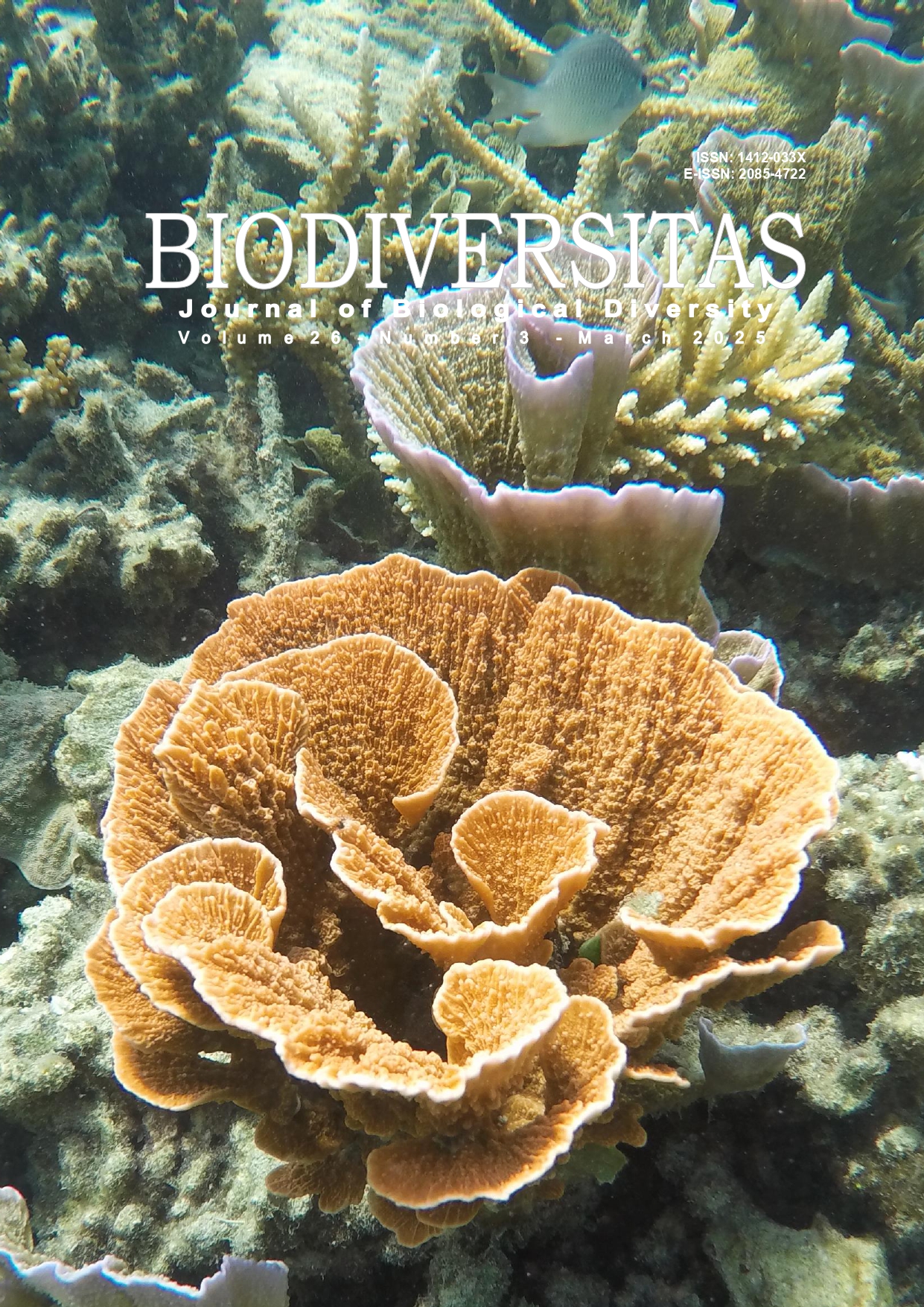Enhancing ecosystem representation in Palestine through strategic recommendations for an effective protected areas network
##plugins.themes.bootstrap3.article.main##
Abstract
Abstract. Ali-Shtayeh MS, Abu-Zaitoun SY, Jamous RM. 2025. Enhancing ecosystem representation in Palestine through strategic recommendations for an effective protected areas network. Biodiversitas 26: 1287-1302. Protected Areas (PAs) in the West Bank, Palestine, were established over 50 years ago to conserve the region’s diverse ecosystems. However, their effectiveness remains questionable. This study uses systematic conservation planning and Geographic Information Systems (GIS) tools to evaluate the representativeness of the 2015 and 2023 Protected Areas Networks (PAsN) in conserving ecosystems and vegetation types. The assessment benchmarks these networks against global conservation standards, such as the Aichi Biodiversity Target of 17%. Indicators such as ecosystem unit representation percentage, the Biodiversity Conservation Index (BCI), and the Comparison Index (CI) were used to evaluate their conservation effectiveness. Findings reveal that key ecosystem units, such as Evergreen Mediterranean Maquis (2.15%), and key vegetation types, including Maquis and Forest (2.11%) and Park Forest (5.40%), are severely underrepresented. In contrast, Desert Salines (46.37%) and Desert Vegetation (43.06%) exceed protection targets. Although revisions to the 2023-PAsN increased PAs coverage to 10.8% of the West Bank, the network remains unevenly distributed, with western ecosystems and vegetation types under intense human pressure. Flaws in previous studies, such as incomplete biodiversity data, arbitrary conservation thresholds, and limited field validation, compromised the design and effectiveness of the national PAsN-2023. These oversights resulted in insufficient protection measures and the exclusion of vital conservation areas. To address these challenges, the study recommends expanding the PA network to ensure more equitable coverage of ecosystem units and vegetation types, reinstating omitted areas with high conservation value, establishing micro-reserves for localized protection of unique habitats and threatened plants found in non-protected natural lands, and enhancing stakeholder collaboration to ensure inclusive and sustainable management. These findings emphasize the urgency of adopting a scientifically rigorous and balanced approach to ecosystem units and vegetation conservation in Palestine.

